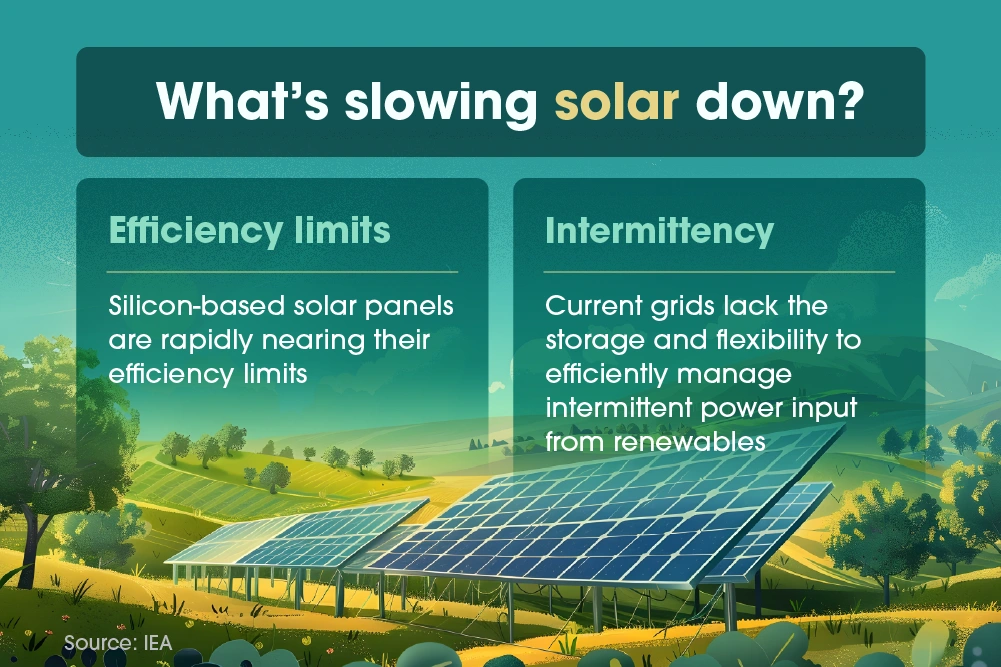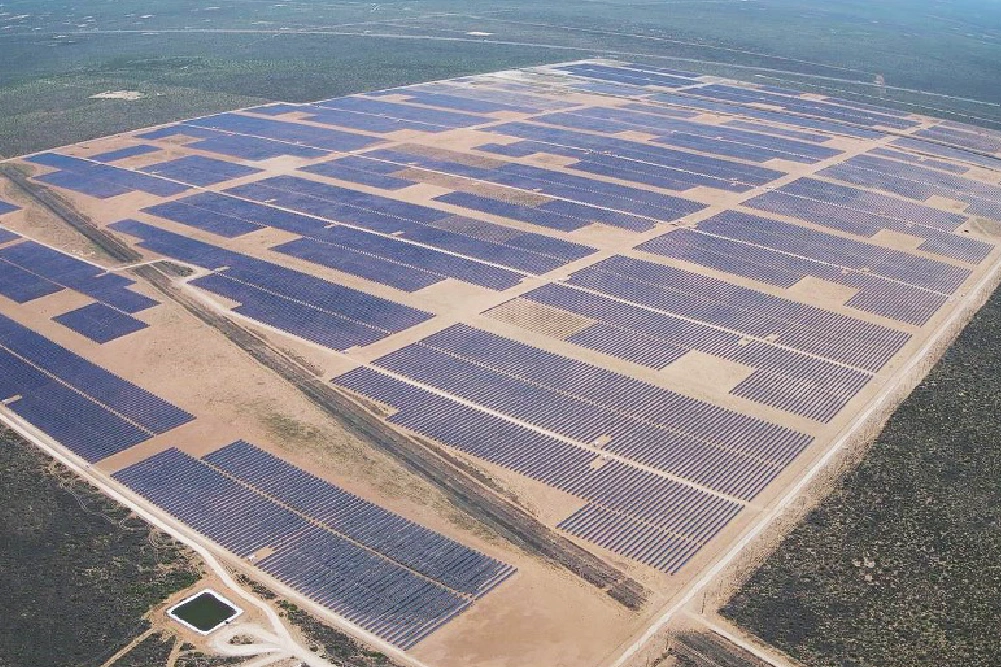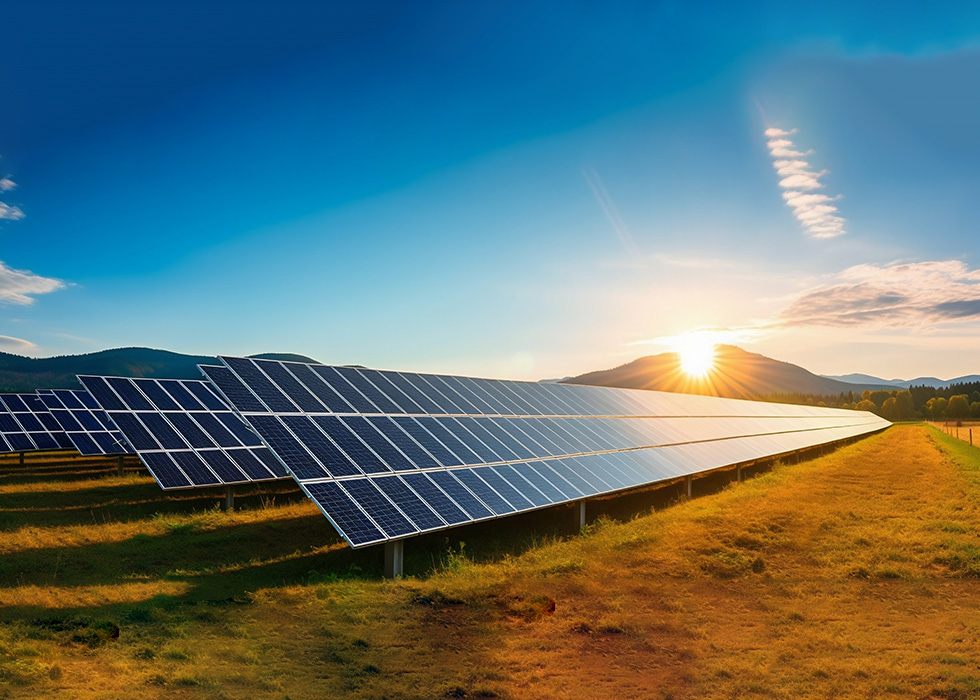What's needed to supercharge solar's growth?

In the last decade, solar deployments have increased dramatically. In the U.S., installations have hit the 5 million mark, with a new goal of 10 million now set for 2030. Per the U.S. Solar Market Insight 2023 Year in Review, total U.S. solar capacity is expected to grow to 673 GW by 2034, enough to power more than 100 million homes. The IEA’s Renewables 2024 report calculates that global renewable energy is on track to add 5,500 GW of additional capacity by the end of the decade, with solar photovoltaic (PV) technologies accounting for 80% of the surge.
While these numbers are promising, the current global renewable capacity is expected to grow by just 2.7 times by the end of the decade, still falling short of the pledge signed at COP28 of tripling by 2030. Still, the IEA predicts that reaching this goal is possible, if timely action is taken to unlock solar’s full potential. In the U.S., the immediate issues facing the industry are interconnectivity — connecting solar energy systems to the grid is complex and time consuming; permitting — securing the necessary approvals for new solar energy installations can take years; and financing — with high interest rates driving up costs. These are no doubt the main roadblocks holding solar back at present, but there are other, more long term issues within solar manufacture, industry, and infrastructure that may hinder it from reaching its full potential. Solar urgently needs new, more efficient tech to continue its trajectory of runaway success. To do so, solar cell efficiency must be increased to give expanded capabilities to the current silicon solar cells that are fast approaching their limit. In addition, energy grid infrastructure needs upgrading across the board to better handle intermittency.
Let’s take a look at the solar industry’s hurdles, and how we can overcome them, in more detail.

What’s slowing solar down?
Efficiency: Currently, most solar panels consist of crystalline silicon cells, capable of converting 22-24% of solar power into energy. However, these panels are reaching a ceiling in terms of potential energy output. To further accelerate solar’s growth, we need to transition to newer technology, such as panels with higher conversion efficiency. The higher the efficiency, the more energy is available to use.
Intermittency: Much of the world’s energy grid infrastructure was built in the 1960s. As we make the shift to electrification, we need to update these grids so they can handle intermittency and the increased energy load. To produce enough solar power to meet the world’s energy goals, the IEA predicts that over 25 million kilometers of electricity grids need to be built and modernized as a short term priority, with 1,500 GW of energy storage system (ESS) capacity also integrated by 2030. ESS implementation will be crucial for this, thanks to its ability to mitigate renewable energy’s intermittent nature. By storing excess energy produced during peak generation periods for use during low-output intervals and managing the fluctuation of energy supply and demand, ESS improve grid reliability and resilience. Throughout the solar supply chain, technologies like AI can also be utilized to further reform energy infrastructure. In the longer term, we need to realize a new type of energy infrastructure, one that can integrate a variety of energy sources and is more robust in the face of inclement weather and periods of low generation.

What are the solutions?
Taking solar technology to the next level: Silicon based cells, which are used in around 95% of the solar market, are quickly reaching their efficiency limit. To give the solar industry a boost and get closer to tripling renewable energy output, we need to expand and modernize existing grid infrastructure and build solar cells with higher efficiency. Perovskite tandem cells, which layer silicon with perovskite materials, broaden the range of sunlight wavelengths captured. These cells have reached a theoretical efficiency of 44%, about 1.5 times higher than single silicon cells, 29.1%. More efficient solar panels will be able to deliver more power from the same area, giving a massive boost to the energy transition. Hanwha Qcells is preparing to launch a pilot line of these new cells.
A new era of energy infrastructure: AI holds great promise in revolutionizing the solar industry thanks to its ability to process vast amounts of data. Through this data, AI can create efficiencies across the board, from manufacturing to managing energy loads so as to smoothly integrate solar into existing grids. It can also be used in the design of an entirely reimagined, modernized energy network that includes virtual power plants (VPPs) and other distributed energy systems (DES) to form a dynamic, more resilient power system. DES allow energy to be generated and stored closer to where it'll be used, reducing strain on the centralized grid. In turn, this allows homeowners more control over where their energy goes. VPPs enable this approach by linking and managing individual household systems to form a collective powerhouse, allowing excess energy generated in one home to support another or be sold back to the grid. By integrating smart inverters and energy storage systems, households can collectively contribute their generated energy to a centralized grid. The result would be an energy reservoir that guarantees a stable power supply to constantly meet the needs of consumers — effectively making it just as reliable as a fossil fuel power plant.

Hanwha Qcells' Beacon Solar Energy Project (CA, U.S.)
Hanwha Qcells’ role in driving innovation
Hanwha Qcells, leading the charge: Hanwha’s unique position as a comprehensive clean energy solutions provider means that it can work collaboratively across its business portfolio, drawing on relevant, diverse expertise at each step of the solar energy value chain — from manufacture to deployment of clean energy solutions, including energy management, financing, and more. More than that, Hanwha Qcells is experienced in commercializing high quality innovative technology, given its success with its proprietary Q.ANTUM solar cell technology development, passivated emitter rear cell (PERC), which boosts the amount of electricity a solar module generates.
An integrated supply chain: Hanwha Qcells is looking to replicate the success of Q.ANTUM’s PERC development by leading the delivery of perovskite tandem cells to the commercial market. Hanwha’s advantage in leading solar market innovation is partly owing to its comprehensive value chain. Hanwha brings the entire solar supply chain under one roof with its U.S. Solar Hub, which allows for streamlined in house collaboration, reduced logistical complexities, and product optimization through localized, instantaneous feedback. This new system serves as a robust foundation of continued growth for one of the largest solar markets in the world and promotes innovation at scale.
Digitalizing the industry: AI will be crucial in leveling up solar’s capabilities and enhancing efficiency across the value chain, from manufacture to grid integration and consumer adoption. One third of all solar panels installed in the U.S. are made by Hanwha Qcells, placing the company in the unique position of a market leader, allowing for the application of integrations like AI and DES including VPPs at scale. Leveraging this position, Hanwha has the capability to implement solutions that can overcome some of clean energy’s limitations and reinvent the way energy is produced, used, and distributed worldwide.
What’s next? With COP29 in Baku, Azerbaijan on the horizon, focus will soon fall on global leaders and what’s needed to accelerate the energy transition. Despite the progress made, the IEA World Energy Outlook 2024 report emphasizes that the world is still a long way from a trajectory aligned with its climate goals. Only by addressing current roadblocks and increasing cooperation between governments and the private sector can the progress needed for renewables, especially solar, be secured at the pace required to meet the world’s energy targets.
Get the latest news about Hanwha, right in your inbox.
Fields marked with * are mandatory.
- Non-employee
- Employee






